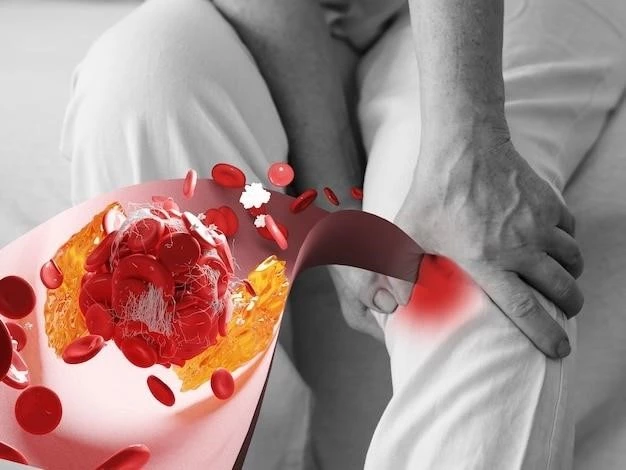Understanding Angiosarcoma
Angiosarcoma is a rare type of cancer that forms in the inner lining of blood vessels and lymphatic vessels. It can occur in any part of the body, but when it affects the scalp, it is referred to as scalp angiosarcoma.
Causes of Angiosarcoma
Angiosarcoma can develop spontaneously, but some known causes include exposure to radiation, chronic lymphedema, certain environmental toxins, and genetic predisposition. Risk factors such as prior radiation therapy or lymphedema increase the likelihood of angiosarcoma formation.
Risk Factors for Angiosarcoma
Several risk factors contribute to the development of angiosarcoma, including exposure to radiation, chronic lymphedema, certain environmental chemicals, and genetic conditions like hereditary lymphedema. Individuals with these risk factors should be vigilant and seek medical advice if symptoms arise;
Symptoms of Scalp Angiosarcoma
Common Symptoms
Common symptoms of scalp angiosarcoma may include a palpable mass or lump on the scalp, persistent and unexplained scalp tenderness, skin discoloration, bleeding from the scalp lesion, and hair loss in the affected area. It is essential to consult a healthcare professional for proper evaluation and diagnosis.
Less Common Symptoms
In some cases, less common symptoms of scalp angiosarcoma may include headaches, neurological changes if the tumor affects the brain, and symptoms related to metastasis such as bone pain, shortness of breath, or abdominal discomfort. These symptoms require prompt medical attention for proper assessment and management.

Treatment Options for Angiosarcoma
Surgery
Surgery is a common treatment for angiosarcoma and may involve removing the tumor along with surrounding healthy tissue to ensure complete excision. Procedures like Mohs surgery or wide local excision are often utilized to treat scalp angiosarcoma. Consult a healthcare provider for personalized treatment recommendations.
Radiation Therapy
Radiation therapy plays a crucial role in the treatment of angiosarcoma by targeting cancer cells with high-energy radiation. It may be used as an adjuvant therapy post-surgery to eradicate residual tumor cells or as a primary treatment for inoperable cases. Discuss with your medical team to understand the role of radiation therapy in your treatment plan.
Chemotherapy
Chemotherapy is a systemic treatment option for angiosarcoma that uses drugs to target and destroy cancer cells. While less commonly used than surgery or radiation, chemotherapy may be recommended for advanced cases or when the cancer has spread to other parts of the body. Your oncologist can provide guidance on the use of chemotherapy in your specific treatment plan.
Prognosis of Scalp Angiosarcoma
Factors Affecting Prognosis
The prognosis of scalp angiosarcoma can be influenced by various factors including the stage and location of the cancer, the presence of metastasis, the patient’s overall health, and the effectiveness of treatment. Timely diagnosis and appropriate management can significantly impact the prognosis of this rare cancer.
Survival Rates
Survival rates for scalp angiosarcoma vary based on the stage of the cancer, the effectiveness of treatment, and individual factors. While this cancer can be aggressive, early detection and a comprehensive treatment plan can improve survival rates. Regular follow-up care and monitoring are essential for long-term prognosis.
Angiosarcoma Awareness and Prevention
Raising Awareness
Raising awareness about angiosarcoma is crucial to promote early detection and improve outcomes. Public education campaigns, support groups, and sharing information within the medical community can help increase awareness about this rare cancer. Encouraging regular skin checks and timely medical consultations can aid in the timely diagnosis of angiosarcoma.
Prevention Strategies
As angiosarcoma’s exact cause is not fully understood, there are no specific prevention strategies. However, early detection through routine skin examinations and prompt evaluation of any suspicious skin changes can aid in timely diagnosis and treatment. Engaging in sun-safe practices and avoiding harmful environmental exposures may also play a role in reducing the risk of certain skin cancers.
Surgical Interventions for Scalp Angiosarcoma
Surgical Procedures
Surgical procedures for scalp angiosarcoma may include Mohs surgery, wide local excision, or resection with clear margins. The goal of surgery is to remove the cancerous tissue while preserving surrounding healthy structures. Your healthcare team will determine the most suitable surgical approach based on the specific characteristics of the tumor.
Radiation Therapy for Angiosarcoma Patients
Role of Radiation Therapy
Radiation therapy plays a critical role in the treatment of angiosarcoma by targeting cancer cells and reducing the risk of local recurrence. It is often used post-surgery to eliminate remaining cancer cells or as a primary treatment for unresectable tumors. Discussions with your healthcare team are crucial to understanding the role of radiation therapy in your treatment plan.
Chemotherapeutic Agents
Chemotherapy in the management of angiosarcoma may involve the use of various chemotherapeutic agents such as paclitaxel, doxorubicin, and ifosfamide. These drugs target rapidly dividing cancer cells throughout the body, aiming to reduce tumor size and prevent the spread of the disease. Your oncologist will recommend the most appropriate chemotherapy regimen based on your specific condition.
